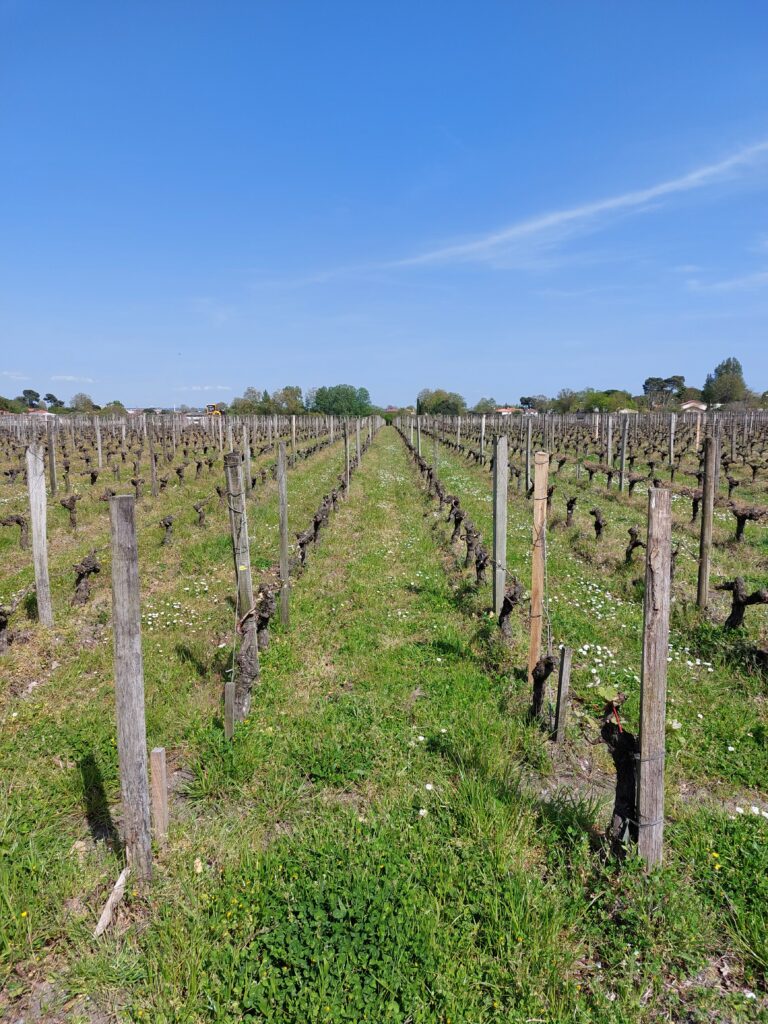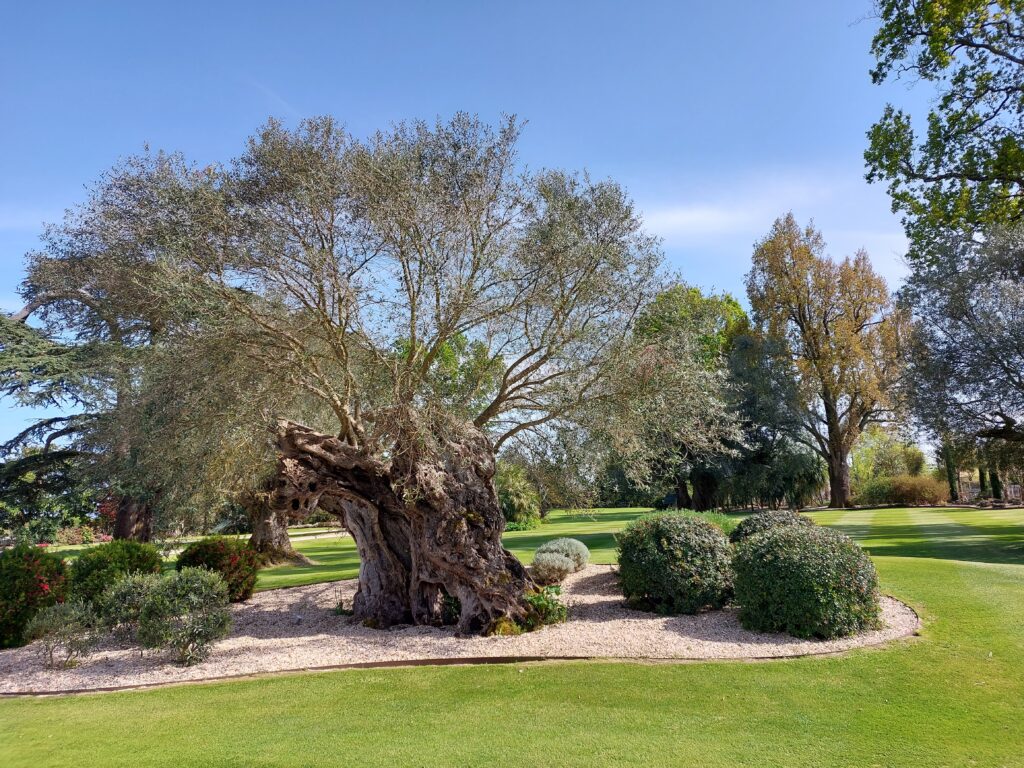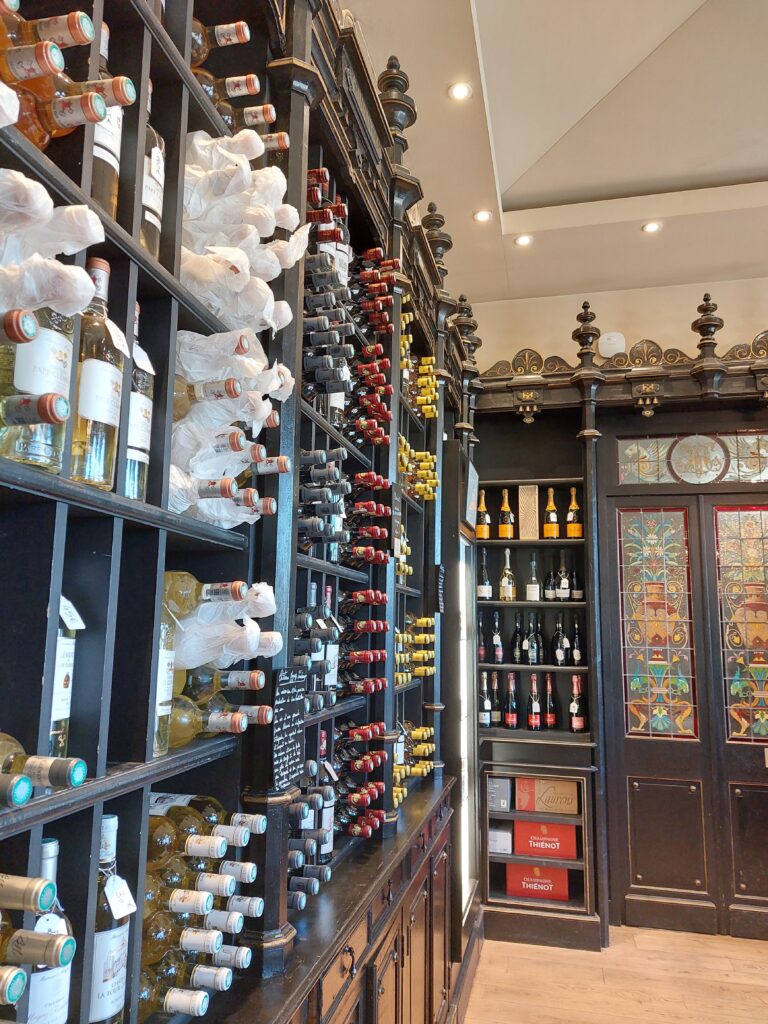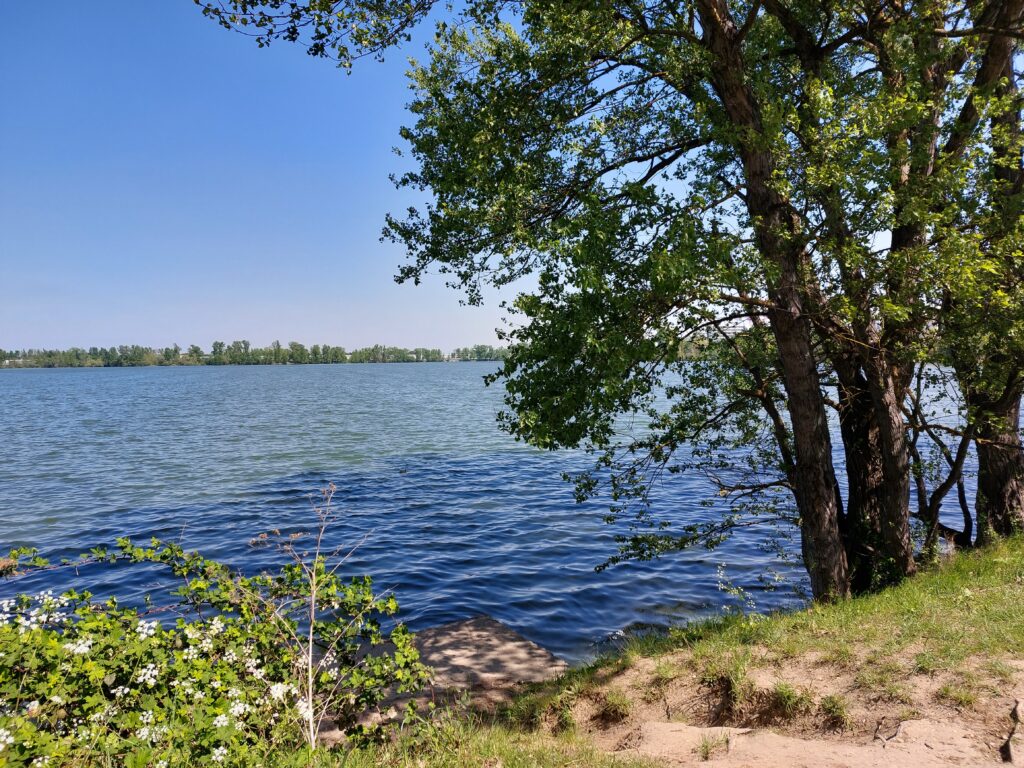In Bordeaux, wine has been made for a very, very long time. The first mention of viticulture in this district is from Pliny the Elder, in the year 71 AD. 700 million bottles of Bordeaux wine are produced per year, of which 90% is red wine.

The red Bordeaux wines are blended, the most used grapes are Merlot, Cabernet Sauvignon, Cabernet Franc and Petit Verdot grapes.

The white wines are made from the grapes Sèmillon, Sauvignon Blanc, Sauvignon Gris and Muscadelle. We also got to taste orange wine! The orange color comes by maceration, i.e. the juice (including peel and seeds) is not filtered immediately. This makes a white wine with more taste and aroma, as is a common practice for red wine grapes. In our case it was perhaps mostly interesting. The orange wine we got was not particularly good. But the red wines!

Visits to wine castles are mandatory for Bordeaux holidays. We made it simple and took the bus to Château Pape Clément. A fantastic place!

Surrounded by vineyards, the castle also had an absolutely magnificent garden with many different plant species. Most impressive, however, were the nearly 2,000-year-old olive trees.

Wine exports from Bordeaux were large throughout the Middle Ages (a great deal went to England, under the name Claret). Many of the winemakers were from the bourgeoisie and survived the French Revolution relatively unscathed. Bordeaux, however, was hit by American wine lice and mildew from the 1870’s, and production declined sharply. After the First World War, it has rised again, up in the sky. Quality wines from Bordeaux achieve extreme prices and are considered objects of speculation! However, simpler wines are overproduced, and many wineries are struggling financially.

Before the wine tasting, a bath is a good idea. After wine tasting – no swimming! Swimming and alcohol is not a good match – and we don’t believe that our readers spit out the wine when they are at a wine tasting – do you? We therefore recommend a morning trip with picnic and swimming to ‘Le Lac’ north of Bordeaux center, and wine tasting afterwards.

Take the tram from Place de la Bourse (Stock Exchange Square), and after 20 minutes you are by a very nice lake which is simply called The Lake (Le Lac).

We flinched a bit when we saw this sign – is it really not allowed to swim here after all?

But nope, the sign warns against steep riverbanks and we were going to the beach. At Le Lac you will find the nicest, family-friendly beach you could wish for. Not very crowded either – at Easter time.

It turned out to be a terrific bath. Fresh and nice water, with a temperature like a summer day in Norway. A little too much seagrass in the water, though. We observed a local hero wearing a full wetsuit for the occasion. In our opinion, it was completely unnecessary, with active swimming you could keep warm in April.

After the bath, a pique-nique is just the right thing to do. And yes, we took the trouble to look up the word picnic, since our groups frenchman had some not child friendly interpretations. ‘Pique’ comes from ‘snacking’, while ‘nique’ means ‘of little value’. Food sharing! Considering that this was a family tour, it usually means that Mom and Dad set up a menu and bring it with them. However, we had messed it up with the order that each individual brings what they want themselves (our family consists of various varieties of carnivores, seafood eaters and vegetarians). So then some of us brought food for themselves – as the agreement was, while others had food to share. It’s never easy! But a good and cozy event, it was.

It’s just right to share food and have a bath at Le Lac. This time a claim that has been tested – and verified – by 4 youngsters.